2022 Arts Highlights of the Year
To celebrate the year’s memorable plays, films, television, music, operas, dance, and exhibitions, we invited a number of arts professionals and critics to nominate their favourites.
Diane Stubbings
I was dazzled by The Picture of Dorian Gray (STC/Rising Festival, reviewed in ABR Arts, November 2020). After years of Australian theatre directors experimenting with multimedia – often with underwhelming results – director Kip Williams found the perfect vehicle in Oscar Wilde’s novel. Cleverly adapted, and with a stunning performance from Nikki Shiels in Melbourne, Australian theatre has not been this good for a long time. (I couldn’t help but wonder what Charles Dickens would have made of the same technology had it been available when he was adapting his own novels for the stage.) Two streamed versions of Chekhov – Uncle Vanya (Sonia Friedman Productions/ABC iview) and The Seagull (NT Live) – were both flawlessly acted and completely enthralling. Though taking different approaches – Vanya more traditional, The Seagull pared back to its absolute essence – each managed to find a refreshing clarity and contemporaneity in Chekhov’s texts. In musical theatre, it’s hard to think of anything better than Fun Home (ABR Arts, 2/22). MTC’s production – an adaptation of Alison Bechdel’s ground-breaking graphic novel – was crisp and cohesive, and the entire company was impeccable.
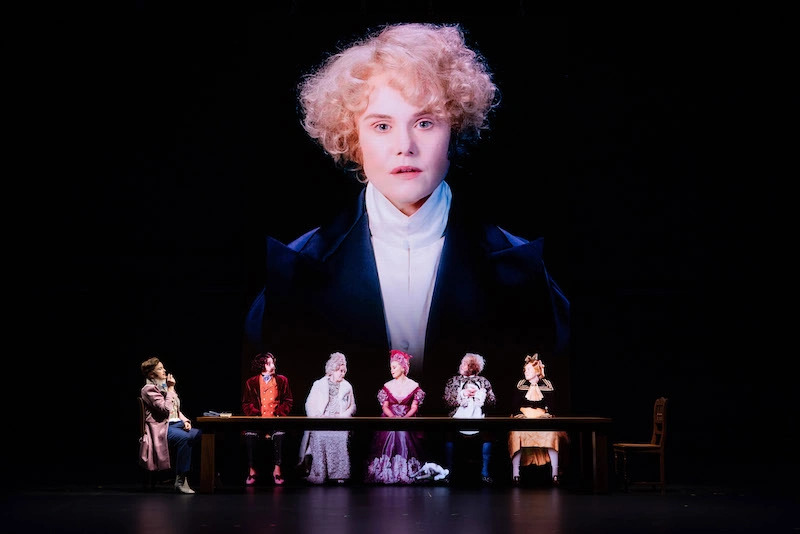 Eryn Jean Norvill in The Picture of Dorian Gray (Dan Boud/Sydney Theatre Company)
Eryn Jean Norvill in The Picture of Dorian Gray (Dan Boud/Sydney Theatre Company)
Robyn Archer
Jean-Efflam Bavouzet performed at Elder Hall in April. His mastery of Debussy (Preludes Book 1) made me feel as if I was ‘hearing’ that repertoire for the first time, and his detailed introduction to Boulez’s Douze Notations won every heart. Explaining each fragment in detail, with funny anecdotes about working with Boulez, he then played the entire piece. Exquisite craft, wonderfully engaging showmanship. Larry Kramer’s 1985 play The Normal Heart returned in a terrific production by State Theatre SA. It’s a long time since I last saw a packed matinee stand to cheer the cast back for three curtain calls. Under Dean Bryant’s deft direction, the Aids message clearly translated to the current pandemic. This was moving, skilful, political – just what a theatre company should be doing. The Cressida Campbell retrospective at the NGA revealed a staggering output of matchless observation and painstaking craft.
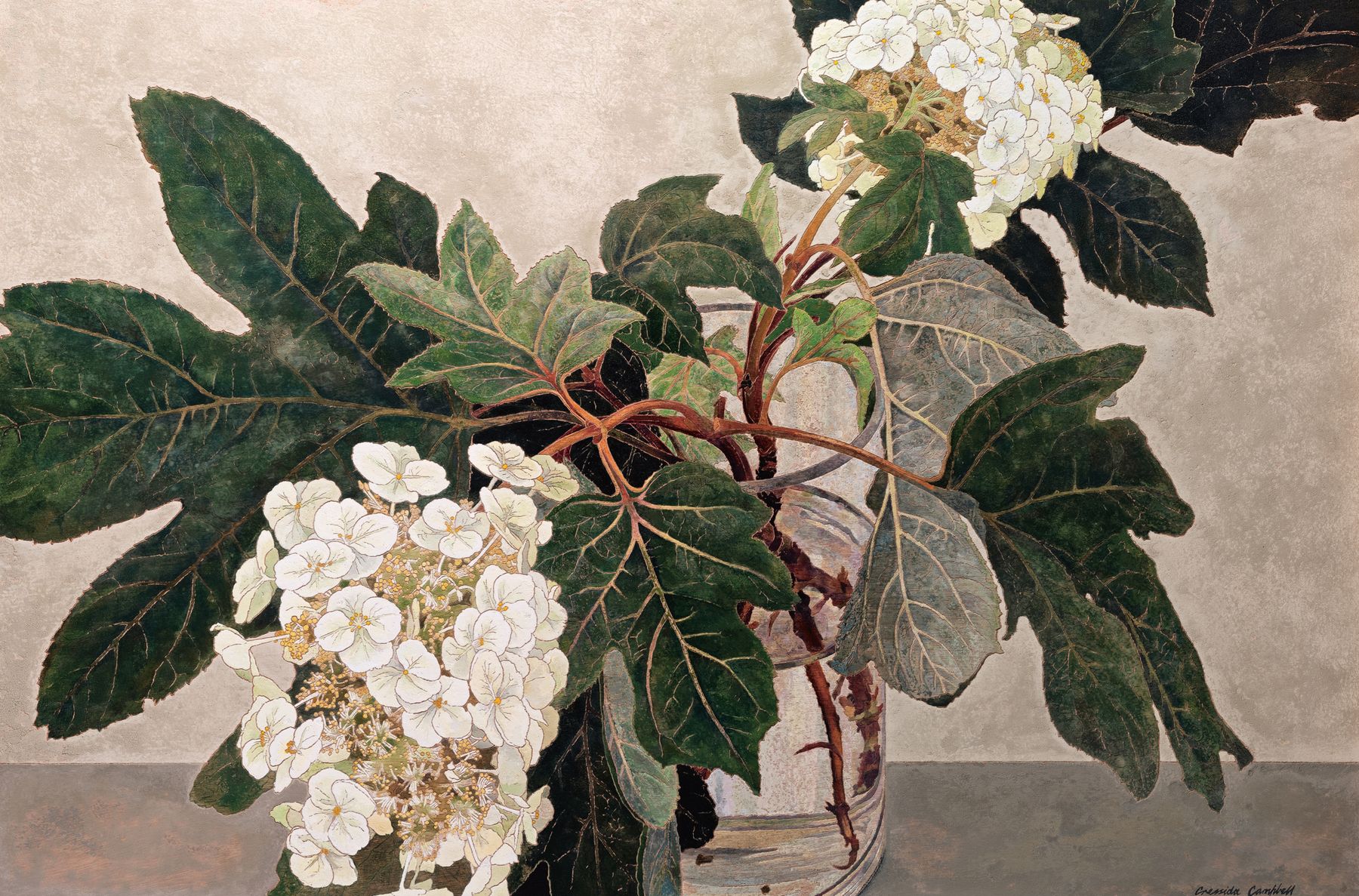 Cressida Campbell, Japanese Hydrangeas, 2005
Cressida Campbell, Japanese Hydrangeas, 2005
Julie Ewington
What lingers from 2022? The National Gallery of Victoria’s The Picasso Century, an intelligent encyclopedic sweep. Here, Picasso’s relationship with fellow artists opened up, rather than boxed in, conversations about twentieth-century avant-gardes. Far smaller, the Art Gallery of South Australia’s Pure Form: Japanese Sculptural Ceramics was a revelation. The invention and variety were astonishing: delicate caprices to monumental sculptures. This ravishing exhibition reminded us how much there is to learn about contemporary Japanese art. In Sydney, the Art Gallery of New South Wales managed its transformation with grace and generosity. Word of mouth is bringing visitors to the new installation of twentieth-century art in the original building, justly so. A fresh and imaginative mix of Australian, Asian, and European works explores the century from Australian perspectives; works by Indigenous Australian artists are central. The last word goes to Archie Moore. His Mīal, at The Commercial in Sydney, charted his Aboriginal body through an extraordinary installation of monochrome paintings. Twentieth-century modernism meets twenty-first century Indigenous inventiveness, an act of reclamation.
 Pablo Picasso (photograph via Pictorial Press Ltd/Alamy)
Pablo Picasso (photograph via Pictorial Press Ltd/Alamy)
Tim Byrne
It was a somewhat liminal year for the performing arts, as long-term administrators retired and new appointees were yet to fully make their mark. Lyndon Terracini’s Sydney-centric tenure, in keeping with his tendency to favour imports over local talent, came to an end with a spectacular coup: Jonas Kaufmann singing the title role in Lohengrin (ABR Arts, 5/22). It was a performance of incredible control and delicacy. Gary Abrahams, a director who had a breakthrough year with several excellent productions playing across multiple media spaces, produced a stunning adaptation of Yentl, the trans subtext as plea and provocation. And Australian Ballet’s David Hallberg brought us a dazzling cabinet of wonders, sleek and sensuous, with his Nederlands Dans Theater production of Kunstkamer. Bold, multifaceted, and magnificently danced (including by Hallberg himself), this was the stamp of an artistic director who knows precisely where he wants to take this vital company next. There is nothing liminal about that.
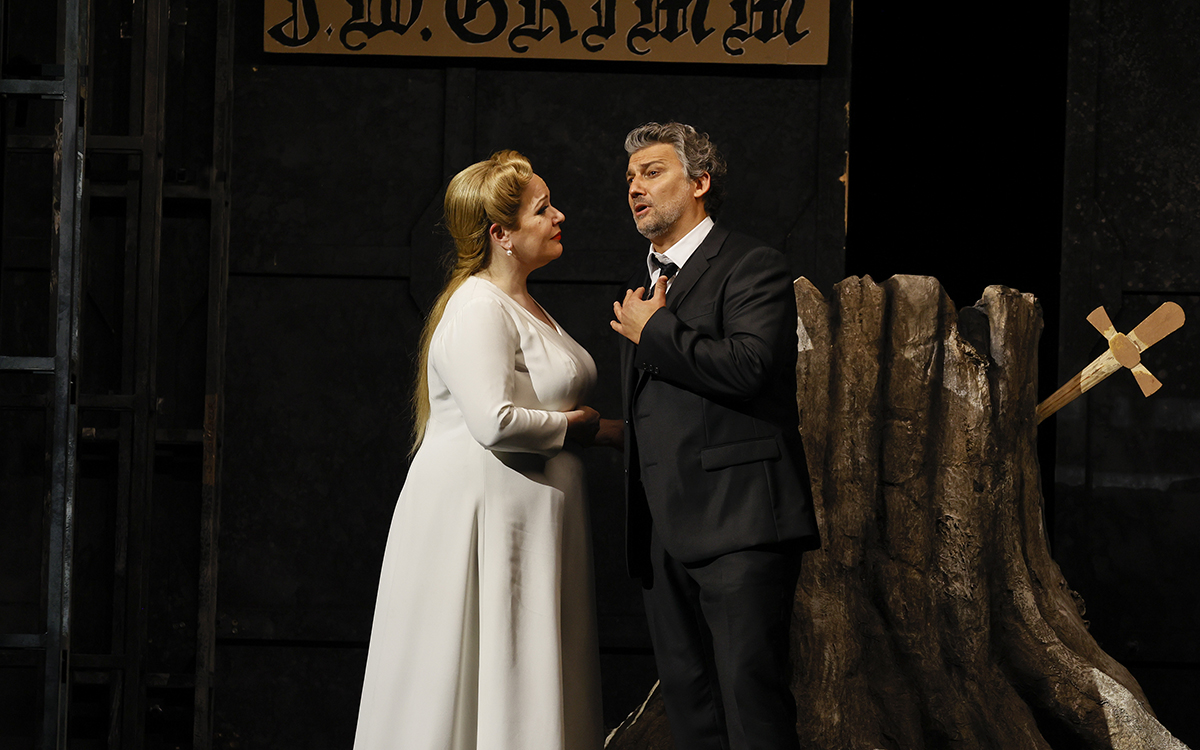 Emily Magee as Elsa and Jonas Kaufmann as Lohengrin in Lohengrin (photo by Jeff Busby)
Emily Magee as Elsa and Jonas Kaufmann as Lohengrin in Lohengrin (photo by Jeff Busby)
Andrew Ford
My best live musical experiences this year came from young musicians. At Judith Neilson’s Dangrove, Sam Weller conducted Ensemble Apex, VOX (the Sydney Philharmonia’s Youth choir) and four superb soloists. The average age was twenty-something. Their performance made me realise the greatness of Verdi’s Requiem, music that had hitherto struck me as vulgar and trivial. I managed to catch Canberra’s Luminescence Chamber Singers twice, partly because they were singing my songs. But they also sang everything from medieval chant to Florence and the Machine, and did it with aplomb. Amazingly, the Australian National Academy of Music (ANAM) commissioned sixty-seven composers, each to write for one of its sixty-seven musicians. Presented as a weekend-long festival, the pieces I heard contained not a single stinker, and the performances – many of them premières of fiendishly tricky music – were so assured that they might have been the players’ party pieces, which I imagine is what some of them will become.
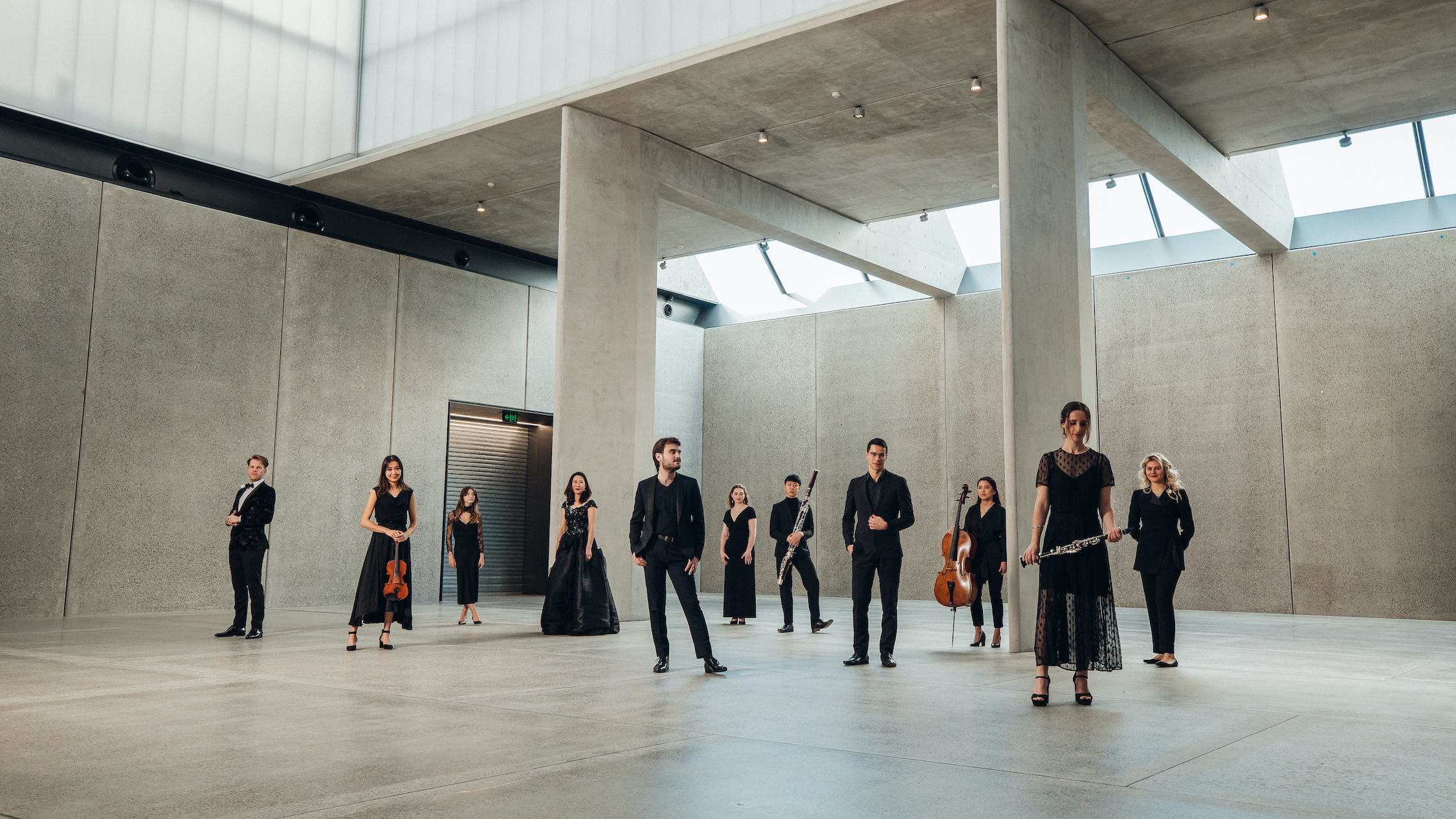 Ensemble Apex at Dangrove @jordankmunns
Ensemble Apex at Dangrove @jordankmunns
Michael Shmith
The highlight of a positive slew of 2022 highlights was Musica Viva’s Winter’s Journey, with the remarkable British tenor Allan Clayton and Australian pianist Kate Golla (ABR Arts, 7/22). Clayton, who is in the top echelon of lieder singers, adroitly and achingly traversed Schubert’s desolate landscape, visually transplanted from nineteenth-century Mitteleuropa to the Great Southern Land of the mid-twentieth century, depicted by various works of Fred Williams. Overwhelming. So, too, was Melbourne Opera’s triumphant all-Australian production of Wagner’s Die Walküre and its one-off concert performance of Siegfried (ABR Arts, 9/22). Both augur well for the company’s complete Ring at Bendigo’s Ulumbarra Theatre in March and April. A word, too, about the Australian World Orchestra’s luminous performances of Richard Strauss’s tone poems Don Juan, Till Eulenspiegel, and Ein Heldenleben (ABR Arts, 9/22). The eighty-six-year-old Zubin Mehta invested these works with the affection and knowledge of a lifetime.
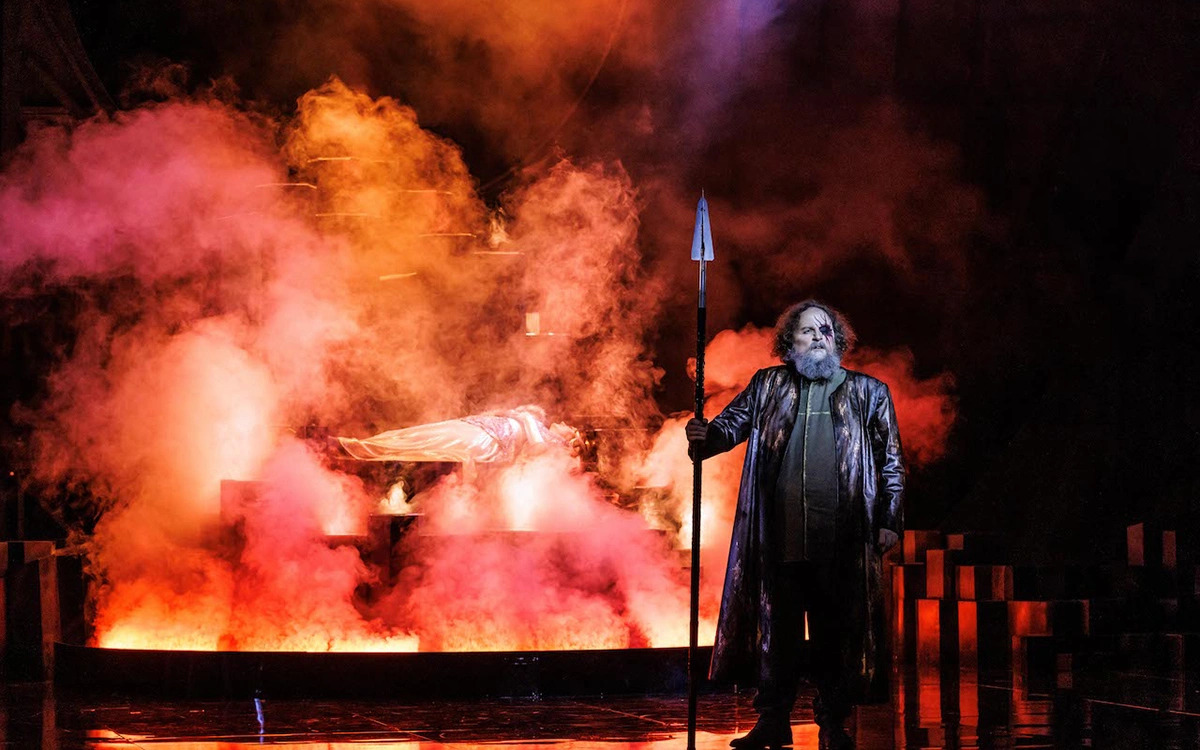 Warwick Fyfe as Wotan in Die Walküre (photograph courtesy of Melbourne Opera)
Warwick Fyfe as Wotan in Die Walküre (photograph courtesy of Melbourne Opera)
Jordan Prosser
After two years of devastating cancellations, the Melbourne International Film Festival returned in full force this year for its seventieth edition. As something of a MIFF zealot, this felt, to me, like the first concrete sign that the pandemic might not have quite the stranglehold on the future of film that perhaps we’d feared. I saw fifty in-person sessions across eighteen delirious days and enjoyed notable premières from beloved directors (David Cronenberg’s gleefully icky and idiosyncratic Crimes of the Future) as well as captivating débuts (Charlotte Wells’s deeply affecting Aftersun, and Charlotte Le Bon’s haunting coming-of-age romance Falcon Lake). Amiel Courtin-Wilson’s Man on Earth proved a breathtaking, full-body encounter with mortality, while the arch satire and projectile vomiting of Ruben Östlund’s Palme d’Or winner Triangle of Sadness (ABR Arts, 12/22) had my sold-out session in raptures – reminding us all that, no matter how good television gets, a packed cinema still offers a unique, at times sublime, cultural experience.
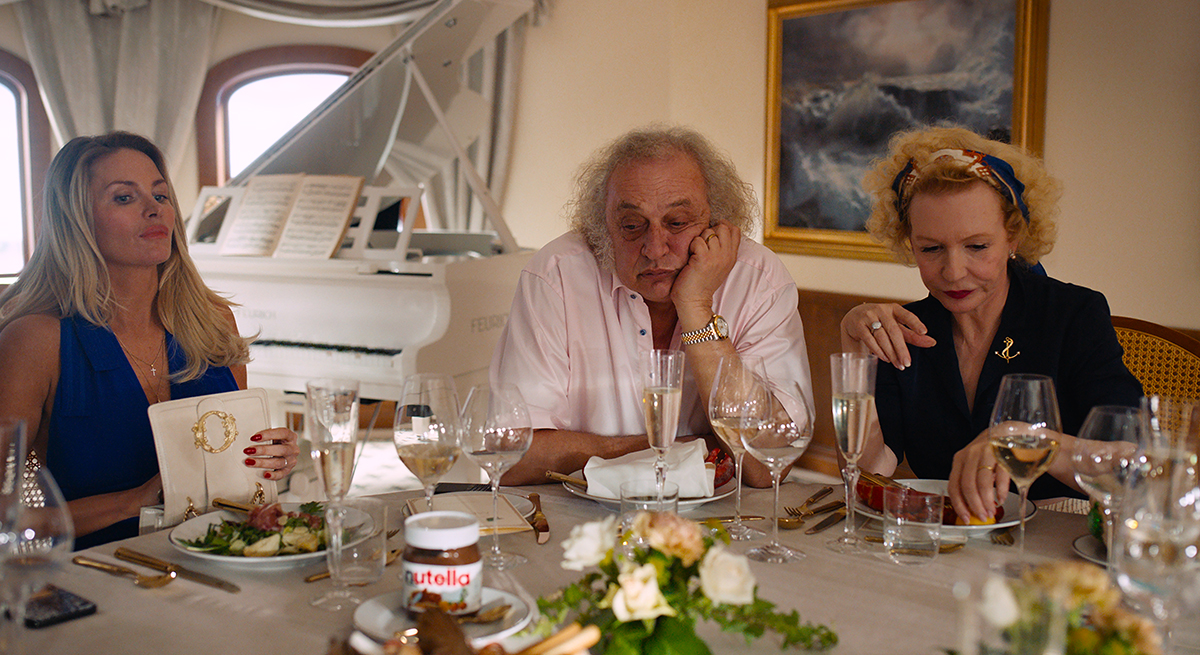 Carolina Gynning, Zlatko Burić and Sunnyi Melles in Triangle of Sadness (photograph by Fredrik Wenzel)
Carolina Gynning, Zlatko Burić and Sunnyi Melles in Triangle of Sadness (photograph by Fredrik Wenzel)
Ian Dickson
The opening concert of the renovated Sydney Opera House Concert Hall – a blazing performance of Mahler’s Second symphony conducted by Simone Young, with glorious singing from Nicole Car, Deborah Humble, and the Sydney Philharmonia Choir – proved the rumours of an acoustic miracle to be accurate (ABR Arts, 7/22). The Australian World Orchestra under Zubin Mehta showed that, when superbly played, an evening of Strauss tone poems does not become a Strauss overload. In Lindy Hume’s staging of Schubert’s Winterreise Allan Clayton, ably backed by Kate Golla, made a riveting, unforgettable impression. In theatre, it was gratifying to be able to welcome the first professional Australian performance of Lorraine Hansberry’s A Raisin in the Sun, powerfully directed by Wesley Enoch (ABR Arts, 7/22). Aided by Priscilla Jackman’s fluid production and Heather Mitchell’s dazzling performance, Of Many, One, Suzie Miller’s portrait of Ruth Bader Ginsburg, is a powerful tribute to a fascinating woman (ABR Arts, 11/22).
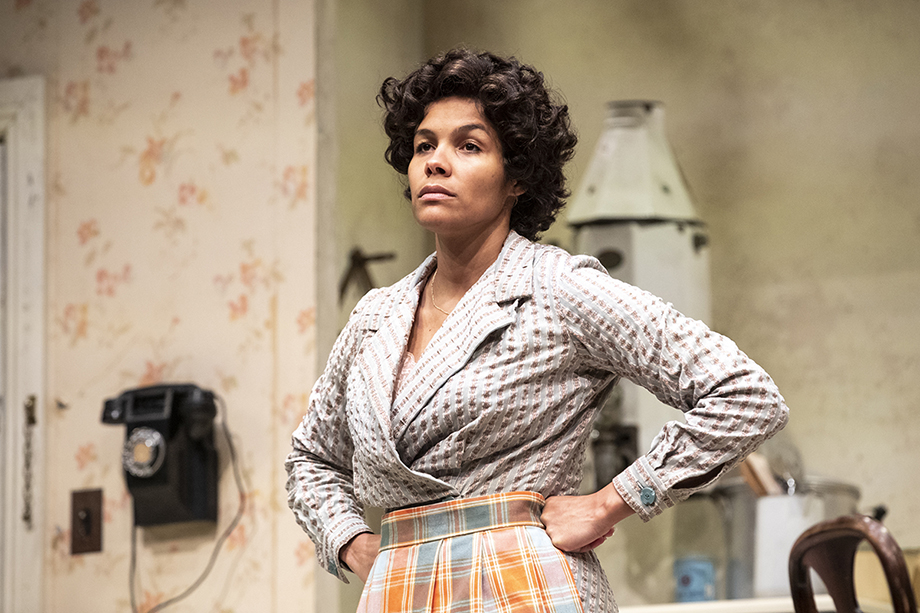 Zahra Newman in the STC's 'A Raisin in the Sun' (Joseph Mayer)
Zahra Newman in the STC's 'A Raisin in the Sun' (Joseph Mayer)
Des Cowley
Coming off 2021, any live music performance was bound to feel momentous. Chief among those that resonate still, the five-hour Sanctuary Suite looms large. Performed at Melbourne’s Elisabeth Murdoch Hall, mid-winter, it elicited a stream of exceptional performances: an hour-long, logic-defying improvisation by pianist Paul Grabowsky and trumpeter Peter Knight; a succession of minimalist soundscapes by pianists Luke Howard and Nat Bartsch; and a reimagining of Nick Tsiavos’s sublime ‘Liminal’, scored for soprano and ensemble. Elsewhere, Brenda Gifford unveiled her composition Moriyawa, created with the Australian Art Orchestra, at the Melbourne International Jazz Festival (ABR Arts, 10/22). Meshing Dhurga language, field recordings, and improvisation, it proved a powerful musical statement. And Julien Wilson, National Jazz Award winner at the Wangaratta Festival in 1994, presented his first-ever solo saxophone concert at this year’s event, playing in the spacious surrounds of the Holy Trinity Cathedral. Magisterial and masterful, it cemented Wilson’s stature as a giant on his instrument.
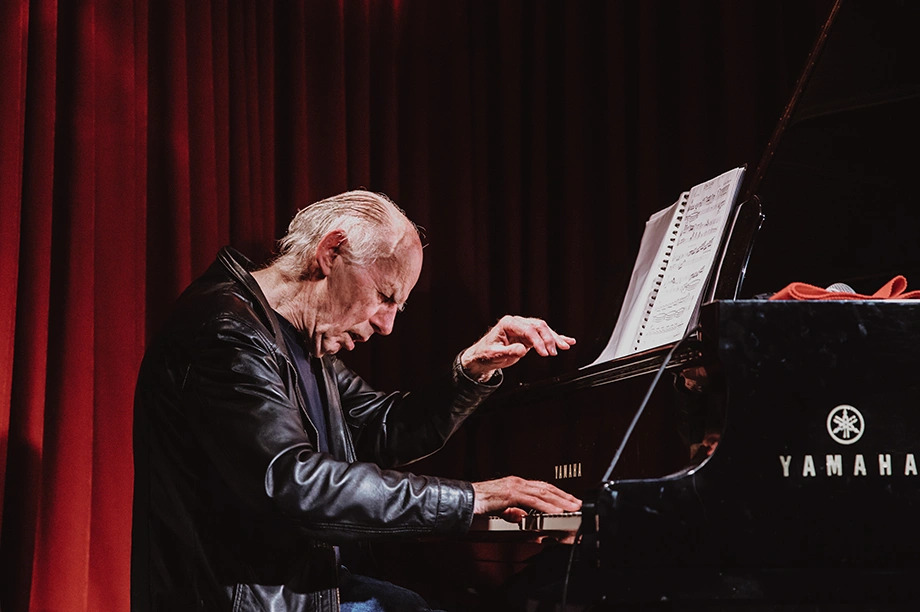 Mike Nock Trio (Photography by Duncographic)
Mike Nock Trio (Photography by Duncographic)
Felicity Chaplin
A highlight of the inaugural Europa Europa festival was Michel Franco’s Sundown, a slow-burn about violence and redemption, with Tim Roth at his devil-may-care best. At the French film festival, Céline Sciamma’s Petite Maman was a standout in a strong program; a deceptively simple fable depicting the fragility of a mother–daughter relationship with captivating charm. Highlights from MIFF were Charlotte Gainsbourg’s intimate and drifting documentary Jane par Charlotte, a probing yet tender portrait of her mother Jane Birkin; and Mikhaël Hers’s luminous and melancholic Passengers of the Night, an allegory of loss and the passage of time set in 1980s Paris. At the British Film Festival, Martin McDonagh’s The Banshees of Inisherin (ABR Arts, 12/22) – with its sharp dialogue, absurdist humour, sublime setting, and the much-anticipated reunion of Colin Farrell and Brendan Gleeson – did not disappoint.
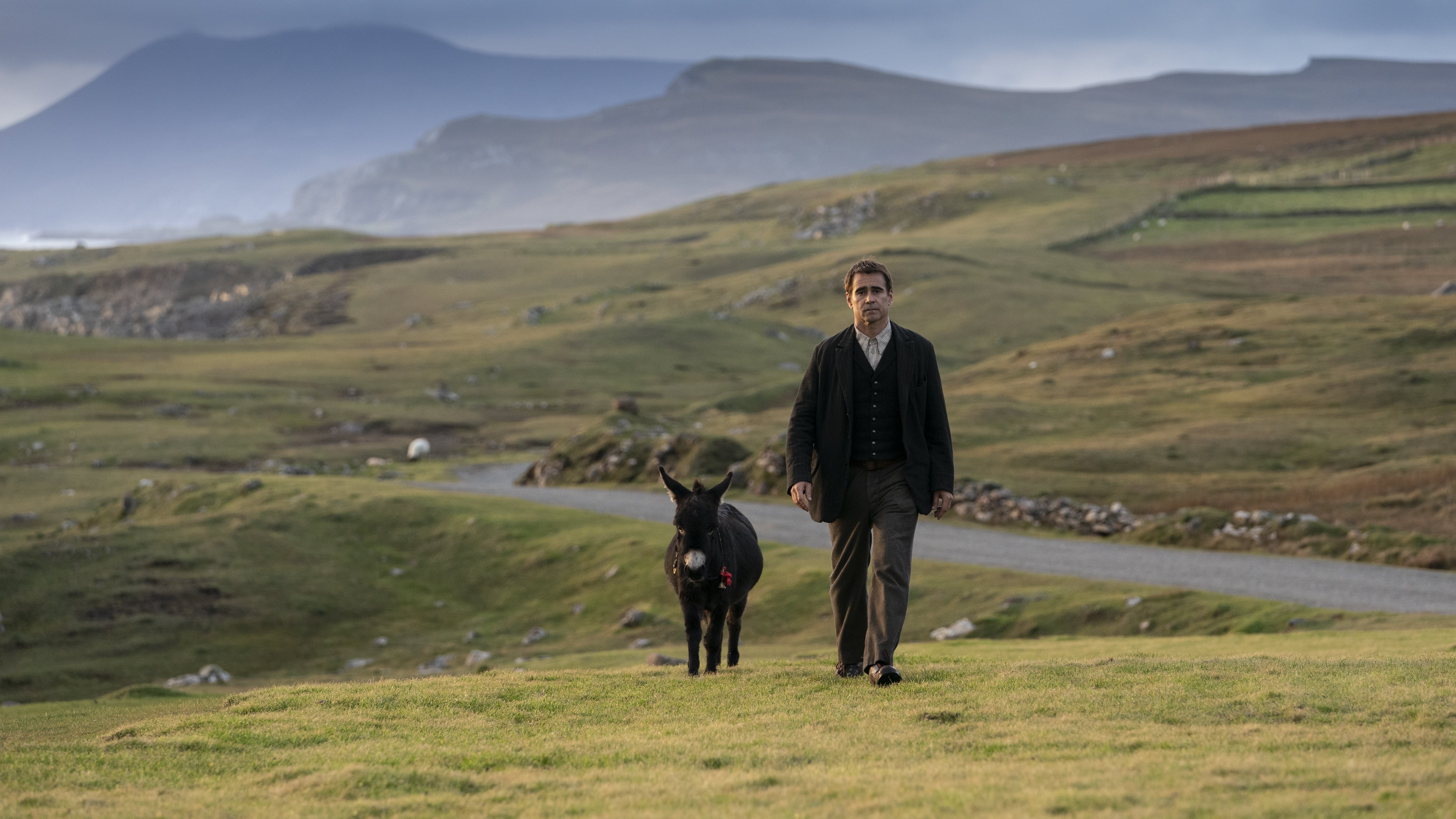 Colin Farrell in The Banshees of Inisherin (photograph by Jonathan Hession)
Colin Farrell in The Banshees of Inisherin (photograph by Jonathan Hession)
Ben Brooker
Two First Nations dance-theatre works reflecting on the ongoing trauma of colonisation blew me away this year: Wudjang by Bangarra in the Adelaide Festival, and Savage by Australian Dance Theatre. The latter bodes well for ADT under new Artistic Director Daniel Riley. Like everybody else, I thought Sydney Theatre Company’s Picture of Dorian Gray (also in the Adelaide Festival) an astonishing example of ‘cine-theatre’, grounded in a masterful solo performance by Eryn Jean Norvill. I also loved THE RABBLE’s YES, a refreshingly spacious work about consent driven by sly humour and a consistently surprising design. Finally, it would be remiss of me not to mention the profoundly affecting Hamlet Syndrome. Playing in the Adelaide Film Festival, the Polish-German documentary follows five young Ukrainian actors as they rehearse a production of Hamlet under a cloud of war. Almost every scene was worthy of its own discussion group.
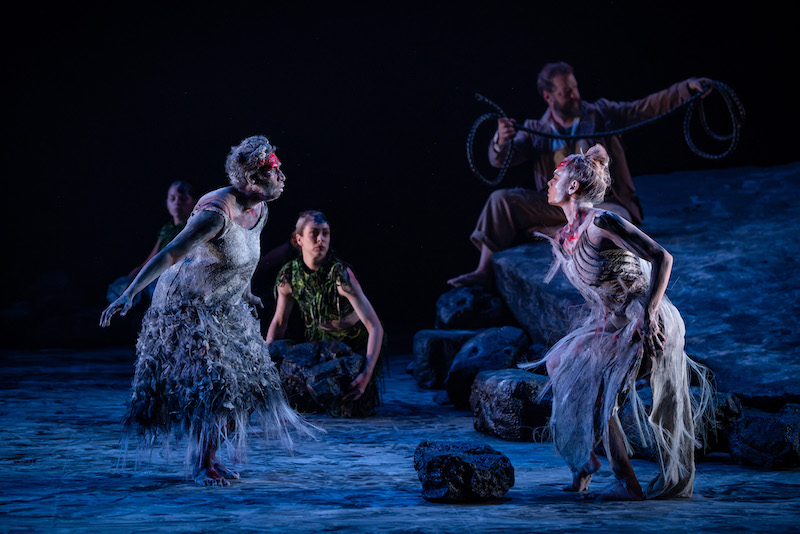 Wudjang: Not the Past - Bangarra Dance Company/STC (Photograph by Daniel Boud)
Wudjang: Not the Past - Bangarra Dance Company/STC (Photograph by Daniel Boud)
Anne Rutherford
Much has been written about Leah Purcell’s retellings of Henry Lawson’s The Drover’s Wife, across stage, page, and feature film, and their re-inflection of Lawson’s story with an Indigenous and feminist perspective. For me, though, the power of Purcell’s film is in her unflinching performance. Purcell wrote, directed, and acted in the lead role, and there is no separation here between actor and character: her commitment is absolute and utterly compelling. Another superlative performance that had me riveted to the screen was in Werner Herzog’s documentary The Fire Within: A Requiem for Katia and Maurice Krafft. Here, the performer is the earth itself, churning and roiling, belching out plumes of orange-red lava and erupting in violent explosions of gas and debris catapulted across the land in spectacular pyroclastic flows. The film is compiled from footage taken by the Kraffts, volcanologists whose scientific study of volcanoes gradually became consumed by the passion for filming them. Fearless, reckless, obsessed: they were all three. Their extraordinary, hypnotic images had me sitting up nights learning about magma chambers, the colour spectrum of lava, from black and red through the rainbow to violet, and supervolcanoes that could destroy much of life on earth in one cataclysmic blast.
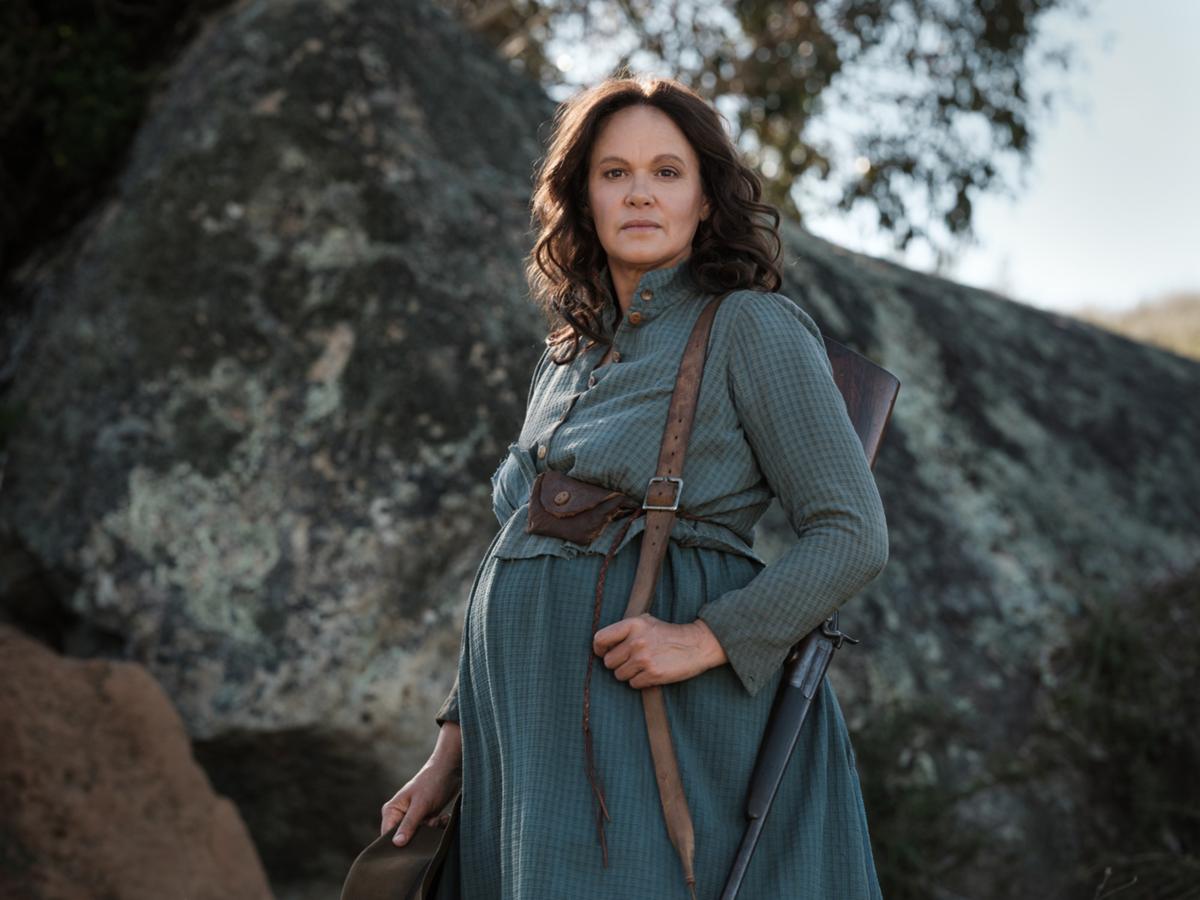 Leah Purcell as Molly in The Drover's Wife
Leah Purcell as Molly in The Drover's Wife
Humphrey Bower
My highlights of 2022 include Neil Armfield’s production of the deeply moving oratorio about a police gay hate killing and its aftermath: Watershed: The Death of Doctor Duncan by composer Joe Twist and librettists Alana Valentine and Christos Tsiolkos (ABR Arts, 3/22); Sydney Theatre Company’s spectacular theatricalisation of Oscar Wilde’s The Picture of Dorian Gray by Kip Williams and Eryn Jean Norville; the Art Gallery of Western Australia’s breathtaking survey of contemporary Pilbara art Tracks We Share; Thai auteur filmmaker Apitchatpong Weerasethakul’s sombre and brooding Memoria; Jean Efflam Bavouzet’s dazzling recital (and insightful commentary on) French piano music (featuring a riveting lecture-performance of Boulez’s Notations and a masterly jazz-infused rendition of Debussy’s Préludes); the Sydney Jewish Museum’s harrowing exhibition of Sidney Nolan’s Holocaust paintings and drawings; and overseas, the timely gender-switched Broadway/West End revival of Stephen Sondheim’s bittersweet 1970s musical about marriage, relationships, and singledom: Company.
 Mark Oates and Mason Kelly in Watershed (photo by Andrew Beveridge)
Mark Oates and Mason Kelly in Watershed (photo by Andrew Beveridge)
Peter Rose
After a perfect year for Wagnerites, 2023 looks equally promising, with two local Rings (Brisbane and Bendigo). Melbourne Opera produced the best Die Walküre I have ever seen, then a galvanic Siegfried in concert. Opera Australia, so rarely heard now in Melbourne, offered some decidedly mixed Verdis but did mount a memorable Lohengrin, with the glorious Elena Gabouri as Ortrud and Jonas Kaufmann a commanding knight. Warwick Fyfe (such a Wotan) was excellent in all three productions. Then it was Richard Strauss’s turn. Following the Australian World Orchestra’s sumptuous evening of tone poems, unforgettably shaped by Maestro Zubin Mehta, Victorian Opera presented a thrilling concert version of Elektra, with the awesome Catherine Foster in the title role (ABR Arts, 9/22). Of the many fine foreign-language films I saw, Asghar Farhadi’s A Hero stood out, with the charismatic Amir Jadidi in the lead role (ABR Arts, 6/22).
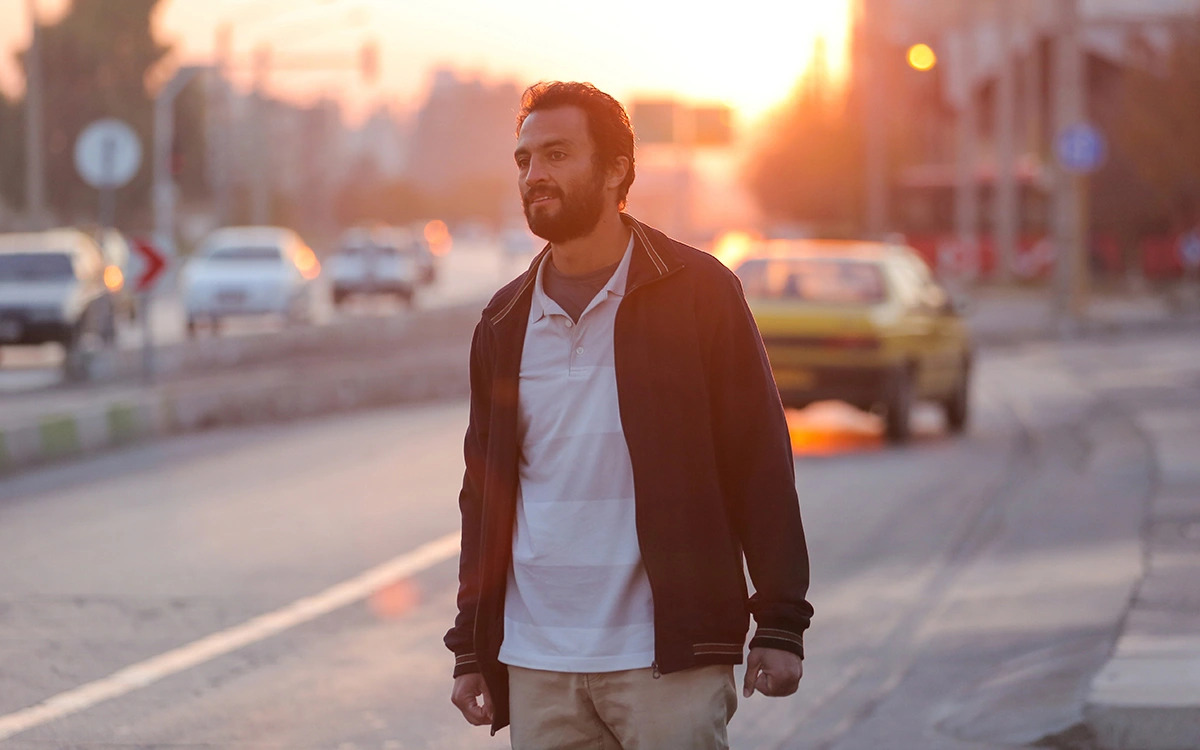 Amir Jadidi as Rahim Soltani in A Hero (photo credit: Amirhossein Shojaei)
Amir Jadidi as Rahim Soltani in A Hero (photo credit: Amirhossein Shojaei)
Sophie Knezic
After the numbness of nearly two years of lockdown, Melbourne galleries and museums relished the opportunity to once again mount exhibitions, despite the complicated rescheduling logistics. One highlight was Peripheral Visions (Anna Schwartz Gallery), presented over three months as a sequence of conceptually taut and visually sensual moving image works by eight acclaimed international artists. This was a timely exploration of displacement, diaspora, and cultural memory. To see these projected in high definition with vivid detail was entrancing. The most breathtaking exhibition of the year, however, was David Noonan: Only When It’s Cloudless (TarraWarra Museum of Art), a major survey of two decades of Noonan’s practice. Using found photographs of dancers and theatre performers from the mid-twentieth century as source material, Noonan reconfigures these into large-scale tapestries. Stripped of colour, cropped and enlarged, the transformed images become a world unto themselves. Walking through the gallery offered a glimpse into this alluring terrain, suffused with a sense of timelessness and Delphic mystery.
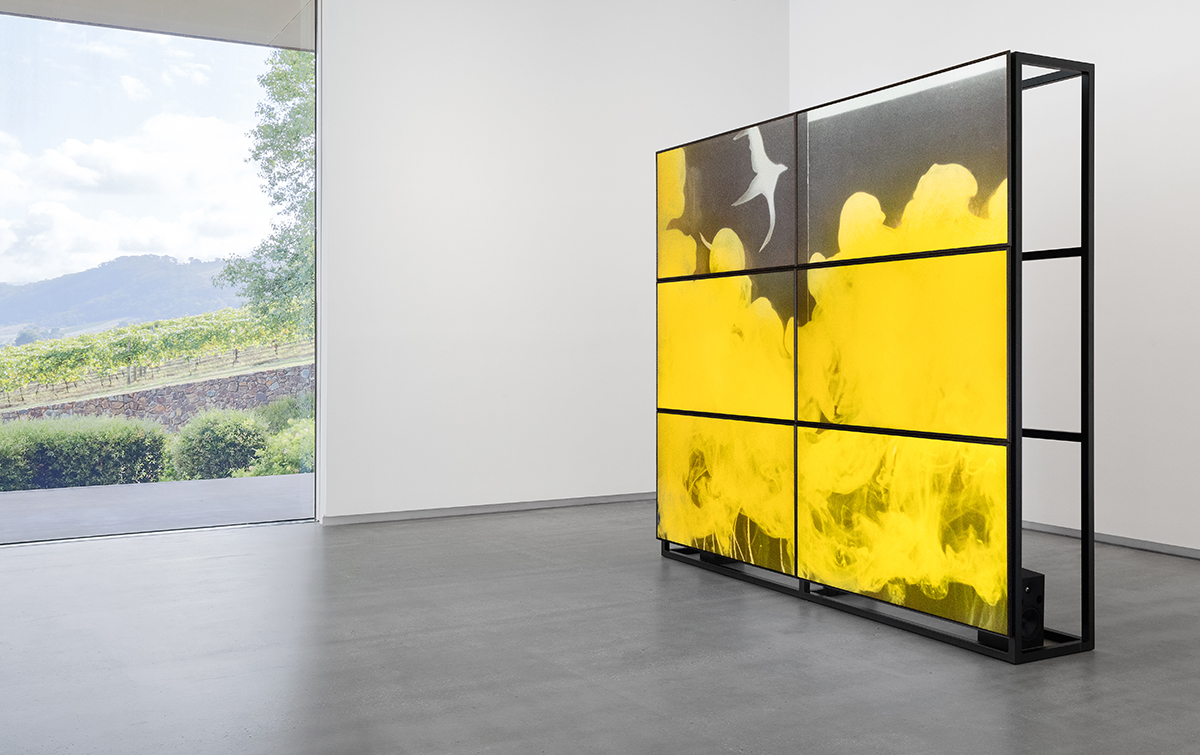 David Noonan, Mnemosyne, 2021: Installation view, Tarrawarra Museum of Art, 2022. Photograph by Christian Capurro
David Noonan, Mnemosyne, 2021: Installation view, Tarrawarra Museum of Art, 2022. Photograph by Christian Capurro
Peter Tregear
The two standout live performances I attended this year were both vocal; Melbourne Opera’s Die Walküre, a triumph of ground-up, large-scale, community-based cultural enterprise, and Allan Clayton and Kate Golla’s equally compelling case for the enduring power of sung drama, albeit at the other end of the scale: their Winterreisse for Musica Viva. With lockdown culture still casting its long shadow over the performing arts in Melbourne, many other memorable cultural experiences were online. Two of the most impressive were the superbly produced US television series Better Call Saul and Ozark as they both wended their way to a conclusion. Both expose and explore the dark side of American aspirational culture, but I was especially struck by the insistence of a moral arc in the narrative of the former, and the stark absence of one in the latter. Which is a more accurate reflection of American civil society today, I wonder?
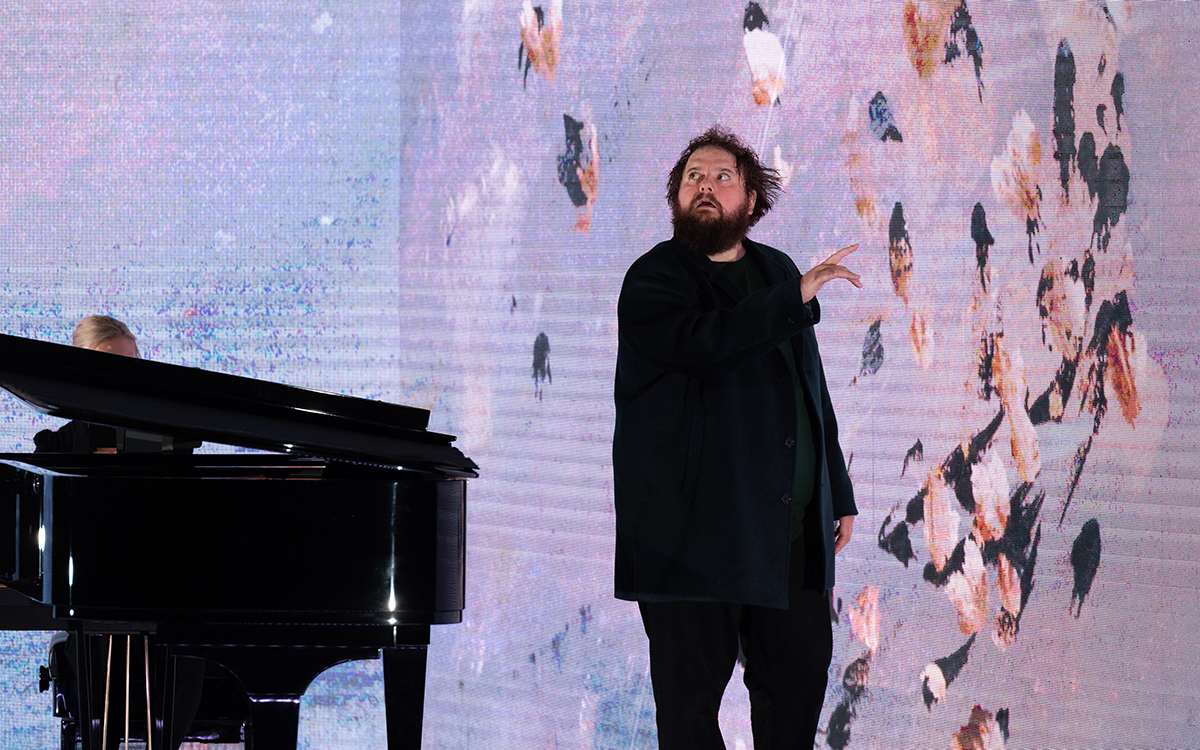 Allan Clayton and Kate Golla in A Winter's Journey (image credit: Bradbury Photography)
Allan Clayton and Kate Golla in A Winter's Journey (image credit: Bradbury Photography)
Michael Halliwell
A particular highlight of the year was the Richard Meale/David Malouf opera, Voss (ABR Arts, 5/22), as a concert performance. After two false starts – Melbourne in 2020, Adelaide in 2021 – an excellent performance was presented by State Opera South Australia, with a strong cast of soloists. This crucially significant opera in Australian musical history now surely deserves a full-scale production? Fromental Halévy’s opera La Juive was staged by Opera Australia (ABR Arts, 3/22). This co-production with Opéra National de Lyon, confronting all the inherent contradictions of this challenging and infuriating work, gave local audiences a chance to see a seldom-staged but historically important work, dominated by a towering performance by Diego Torre as the tortured Éléazar. Last, but certainly not least, was Schubert’s Winterreise, sung by another outstanding tenor, Allan Clayton, with expressive pianist Kate Golla. A searingly definitive performance of white-hot intensity, it will long linger in the memory.
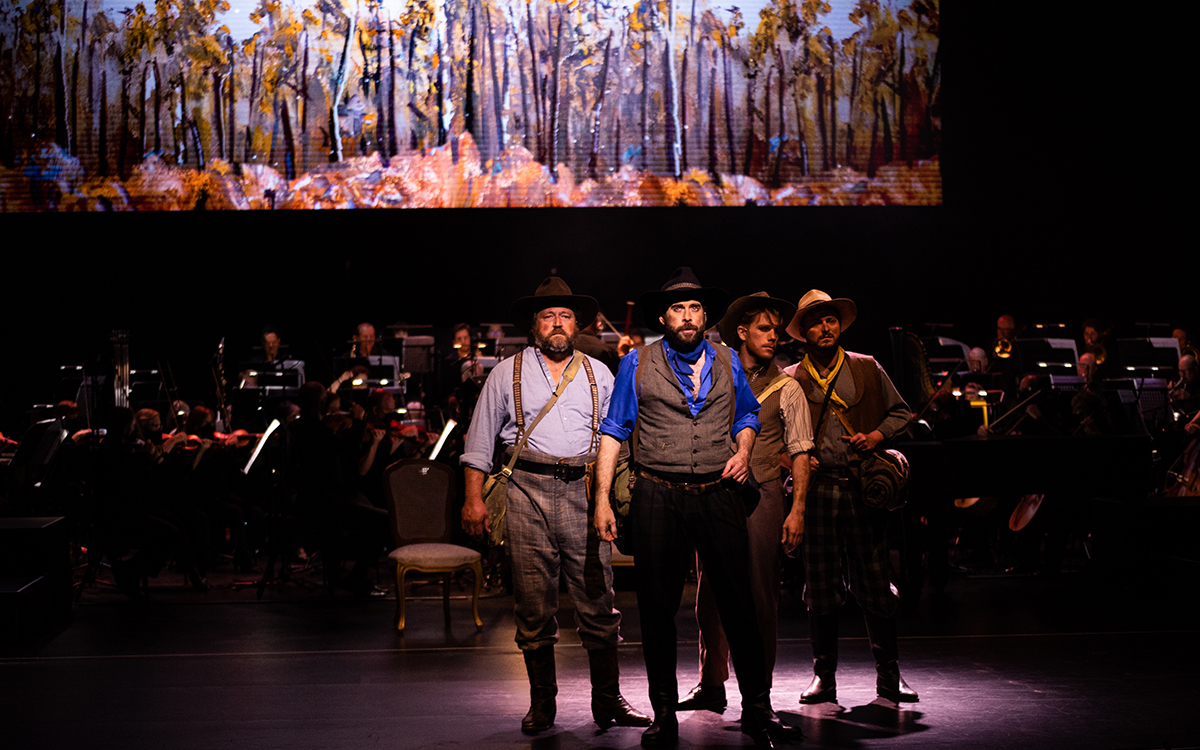 Voss (Samuel Dundas) and his expeditionary crew in Voss (photo credit: Soda Street Productions)
Voss (Samuel Dundas) and his expeditionary crew in Voss (photo credit: Soda Street Productions)


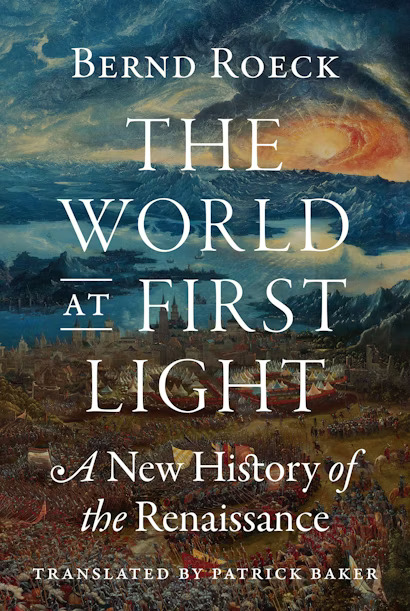
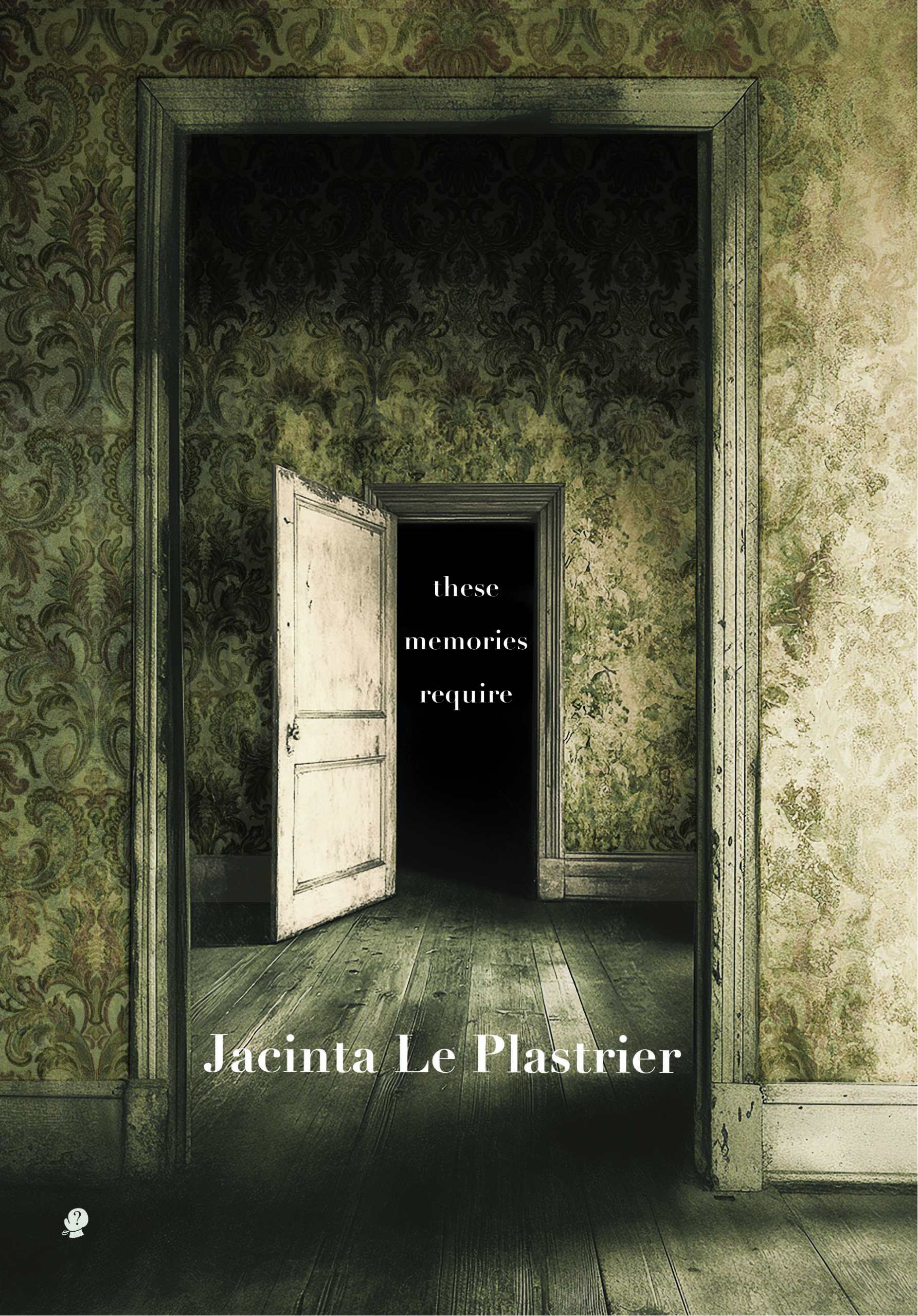


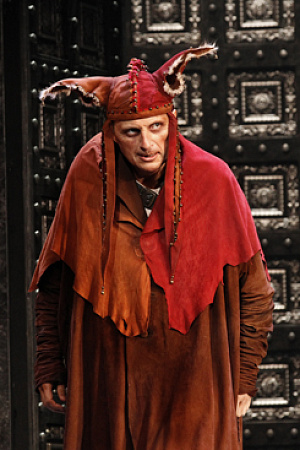
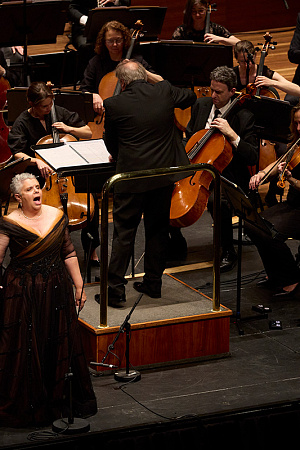
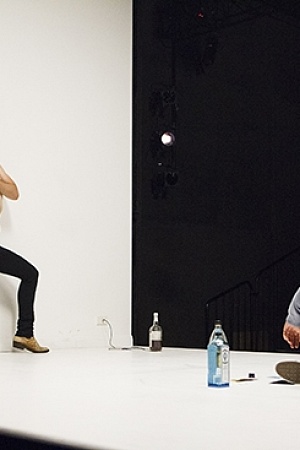
Leave a comment
If you are an ABR subscriber, you will need to sign in to post a comment.
If you have forgotten your sign in details, or if you receive an error message when trying to submit your comment, please email your comment (and the name of the article to which it relates) to ABR Comments. We will review your comment and, subject to approval, we will post it under your name.
Please note that all comments must be approved by ABR and comply with our Terms & Conditions.